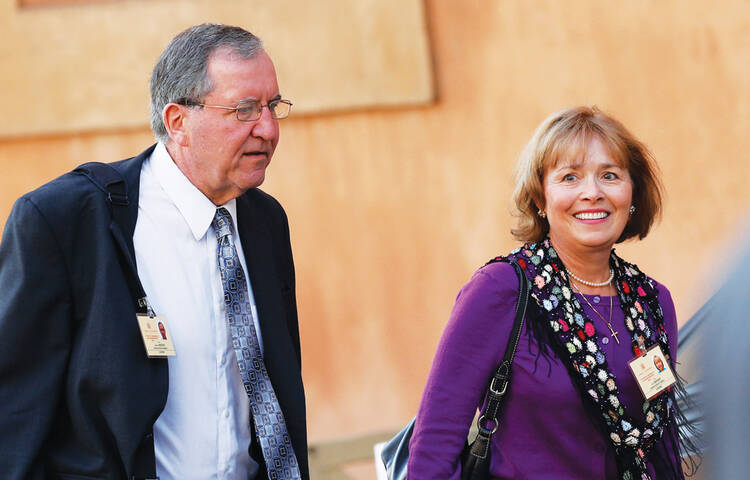The number of new Catholic marriages in the United States is at its lowest point since 1965. Statistics from Georgetown University’s Center for Applied Research in the Apostolate show that while there were over 420,000 Catholic weddings in 1970, that number has dwindled to just over 154,000 in the year 2014.
“There’s no definitive answer” for this trend, according to Mark Gray, a senior research associate and poll director at the center.
“We’re seeing an increase in cohabitation,” which can “create a hurdle to receiving the sacrament of marriage, depending on the parish or diocese’s policies,” Gray said. “There’s also the notion of a destination wedding trumping the traditional notion of getting married within the church.”
Tim Staples, director of apologetics at Catholic Answers in El Cajon, Calif., told CNS that “though a particular bishop may grant permission for a Catholic to be married outside of an actual Catholic church, the law of the church does not permit it, ordinarily speaking.
“For Catholics, there must be an official representative of the church present [or a proper dispensation given] in order for there to be a valid marriage, or, we could say, for one to be married ‘in the church,’” he said.
The United States also sees “a very large share [of annulments] that occur in the church globally,” according to Gray. However, even the United States is seeing a lower number of annulments, which have dropped from 60,691 in 1985, the earliest data available, to 18,558 last year. “Divorce is becoming less common” in the United States, according to Gray. “In aggregate terms, fewer marriages means fewer divorces.”
Despite these numbers, Gray remains optimistic. “We’ve historically seen changes in the past...much like the baby-boomer generation. Things were different before World War II. Mass attendance was down, as were baptisms and [sacramental] marriage rates, but the baby-boomer generation saw a time of cultural change, so it’s difficult to predict what’s going to happen.”
With regard to young people in the church, Gray said that “millennials are a little more traditional, a little more romantic and more interested in marrying in the church.”
Last October, Jeff and Alice Heinzen, a married couple from Wisconsin, served as auditors to the Extraordinary Synod of Bishops on the Family. Alice is director of the Office for Marriage and Family Life in the Diocese of La Crosse and Jeff is the president of McDonell Catholic Schools in Chippewa Falls.
One of the several “takeaway” messages of the synod for American Catholics, according to the Heinzens, is “to remain accountable to the truths that come from God [when it comes to marriage]. We must never stray or be led away from the Gospel message when we deal with families.”
“Perhaps the greatest challenge [to marriage] both here and abroad,” they wrote in a joint email, “is the triumph of self-reliance over self-sacrifice. Today’s culture values independence over interdependence. The need to commit oneself to another in marriage makes little sense when the perceived outcome is ‘me’ and not ‘we.’”
However, like Gray, the Heinzens also see a cultural renewal emerging on the Catholic marriage front. “One of the most positive cultural trends that we see is a shift in catechesis from a child-centered focus to a parent-centered focus,” they said. “This trend allows parishes to utilize the basic desire found in most parents’ hearts to provide the very best for their children.... This shift in the catechetical approach is bearing great results because parents are learning how to become primary educators for their children.”








